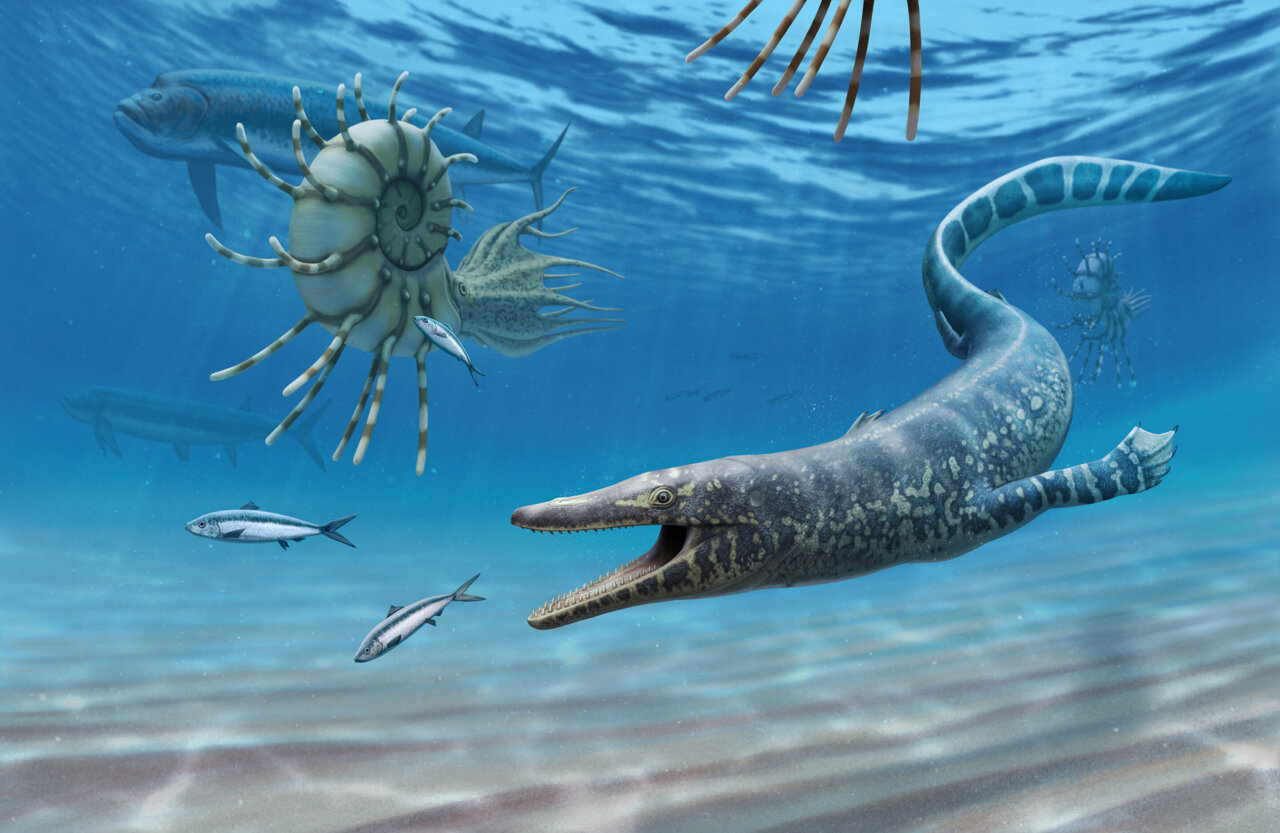Dr. Barry Albright, a faculty member at the University of North Florida, is part of a research team led by the Bureau of Land Management (BLM) that has made a significant discovery in the field of paleontology. They have unearthed a 94-million-year-old mosasaur in the gray shale badlands of the National Park Service Glen Canyon National Recreation Area in southern Utah. This groundbreaking finding, published in Cretaceous Research, has provided new insights into the evolution of these ancient marine reptiles.
The journey to this discovery began approximately 11 years ago when Scott Richardson, a trained volunteer working with Dr. Albright, embarked on a search for fossilized remains of creatures that once inhabited a vast seaway during the Late Cretaceous Period, around 84 to 95 million years ago. In March 2012, Richardson stumbled upon numerous small skull fragments and vertebrae of an early mosasaur scattered across a shale slope.
Dr. Albright explained that mosasaurs from this time period were still in the early stages of becoming fully adapted to marine life, making their fossils extremely rare and challenging to find. Over the next two field seasons, a joint team from the BLM and the National Park Service managed to recover nearly 50% of the specimen, allowing them to determine its exact identity.
The research team, led by BLM paleontologist Dr. Alan Titus, included volunteer Steve Dahl, who was later honored by having the species named after him. The mosasaur was given the scientific name Sarabosaurus dahli, signifying the ancient seaway it inhabited and the mirages often seen in the region’s scorching summers.
Dr. Titus emphasized the significance of this discovery, as mosasaurs from rocks older than approximately 90 million years are extremely rare. The Sarabosaurus specimen not only provides informative data but also sheds light on the evolution and antiquity of a unique cranial blood supply observed in a specific group of mosasaurs.
Mosasaurs, which originated as small lizard-like creatures about 3 feet long, eventually evolved into massive marine predators that dominated the oceans during the late dinosaur age. Their land-dwelling ancestors resembled modern Komodo Dragons, but over time, their aquatic relatives developed streamlined bodies, paddle-like fins, and powerful tails for swimming. Sarabosaurus, although still exhibiting some lizard-like features, possessed a distinctive characteristic—an innovative cranial blood circulation system.
Dr. Michael J. Polcyn, affiliated with the University of Utrecht, Netherlands, and Southern Methodist University, Dallas, remarked on how Sarabosaurus not only addresses longstanding questions about the relationship between early branching mosasaurid species but also offers new insights into the evolution and ancient origins of a unique cranial blood supply within a specific group of mosasaurs.
Source: University of North Florida
